Close-ended vs. open-ended questions: Best practices, tips, & examples
An open-ended question allows respondents total freedom in their responses, while a close-ended question produces quantifiable data. Learn how to use both.

When constructing a survey, researchers have two main question forms to choose from. They can select close-ended questions to generate structured, quantifiable data. Alternatively, they could opt for open-ended questions, offering insight into the why behind certain opinions or ideas.
Understanding how to use close-ended and open-ended questions effectively is vital when creating a rich survey. In this article, we’ll explore close-ended and open-ended questions, when to use each, and tips for getting more from these question formats.
What is an open-ended question?
An open-ended question is a type of question where respondents can write out any opinion they like. Instead of selecting from a limited number of responses, they have complete freedom to say as much or as little as they would like.
When creating a survey, you can add a textbox question type to allow people to share their opinions. Open-ended questions are a great choice if you’re looking to generate data for qualitative research.
Pros and cons of open-ended questions
Open-ended questions can be extremely useful when businesses want to better understand the “why” behind certain opinions. However, using too many open-ended questions could lead to low survey response rates, as they require more effort to complete.
Here are some pros of using open-ended questions:
- Detailed responses: An open-ended question text box can inspire users to write at length in response to your question. A written response can provide more detail than a close-ended question and shed light on your question.
- New ideas: When you give respondents the ability to write their own answers, you may receive data or ideas you would not have thought of yourself.
- Complete freedom: Open-ended questions are an unlimited format that allows respondents complete freedom in their responses. They can write as much or as little as they’d like, ensuring their answer directly represents their true opinions.
On the other hand, here are some cons of using open-ended questions:
- Time-consuming: Open-ended questions require more effort for respondents to fill in. This can lead to fatigue during your survey and reduce completion rates if you use too many.
- Lack of utility: Some responses, especially if your question is ambiguous, may produce answers that are not useful or irrelevant to your research.
- Harder to analyze: Open-ended questions produce written information, which is harder to analyze when compared to structured data from close-ended questions.
The key to overcoming these cons is understanding when to best use open-ended questions.
Open question examples
There are several moments when open-ended questions are useful in surveys.
A common example of an open-ended question is directly after a close-ended one. This open-ended question will ask someone to justify or explain their reasoning for giving a certain answer to the close-ended question. These could be optional or mandatory, depending on the data type you’re looking to generate.

Another type of open-ended question you can use in a survey is when there is a large volume of potential answers. Instead of trying to think of every possible answer to a question and listing it in a close-ended format, you can instead use an open-ended question. In the example below, you can see that a respondent may have a number of reasons for finding their job satisfying.
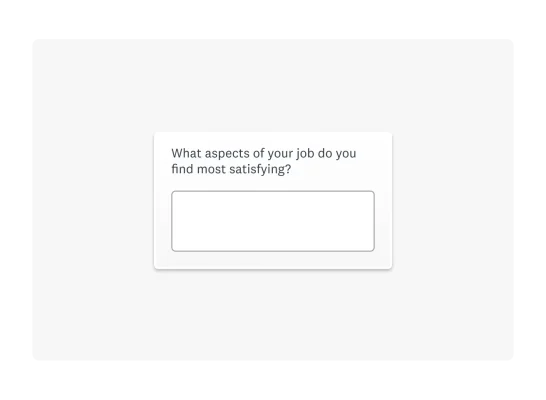
This question works well as an open-ended one, giving the respondents the flexibility they need.
Open-ended questions are also a useful final question module to add to your survey. You can use them to give respondents space to write any comments, ideas, or insights they didn’t have the opportunity to share in your survey. While not every survey respondent will use these final questions, they are useful, just in case.
What is a close-ended question?
Close-ended questions offer respondents a limited number of answers to choose from. Typically, they use a multiple-choice format, where a user selects the response that most closely aligns with their own opinion.
Close-ended questions are useful when conducting quantitative research, as all of your answers will fit neatly into the potential options you’ve created.
Pros and cons of closed-ended questions
Close-ended questions are useful when businesses want to rapidly generate lots of data and make the survey process easy for respondents.
Here are some pros of using open-ended questions:
- Easy to respond to: When working with close-ended questions, respondents only have to select an answer from a list, making these quick to fill in.
- Consistent for analysis: Since all of your respondents will select one of X number of available answers, your data collection will be structured and extremely easy to analyze.
- Useful for screening: Close-ended questions are useful as screening questions at the beginning of a survey. You can use them to determine whether or not a survey is right for your respondents, saving them time and increasing the accuracy of your response pool.
However, there are also some cons to close-ended questions:
- Inflexible: Close-ended questions do not give respondents any room for creativity. If their actual opinion isn’t listed among the options they can choose from, you could reduce the accuracy of your survey.
- Lack of nuance: Opinions are seldom 100% one thing or another; they tend to live in a gray area. Close-ended questions cannot capture this degree of ambiguity, leading to less precise answers.
- Can include bias: Close-ended questions are easy to accidentally introduce bias into. If your potential answers don’t capture the full range of possible answers, you could easily skew the accuracy of your results.
You can overcome many of the cons of close-ended survey questions by pairing them with open-ended questions. The flexible nature of open-ended questions helps to fill in any gaps that may occur in your close-ended questions.
Closed question examples
There are several different types of close-ended questions that researchers can use in surveys.
For example, the Net Promoter Score® (NPS) survey, an industry-standard metric for tracking customer loyalty, uses a close-ended question as the basis for the entire survey. The NPS question offers respondents the opportunity to answer on a scale of 0-10.

Close-ended questions typically use worded or numeric rating scales. The NPS survey falls on the numeric side of close-ended questions. However, word responses can also be close-ended. Here’s an example of a survey question that offers users a small selection of potential worded responses.
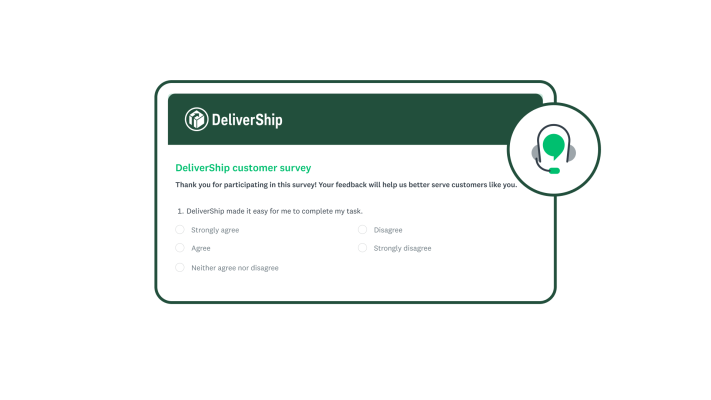
Close-ended questions can also be interactive. In ranking questions, researchers ask participants to put a small selection of answers in a certain order. For example, the following survey question asks respondents to rank TV shows from their favorite to least favorite.
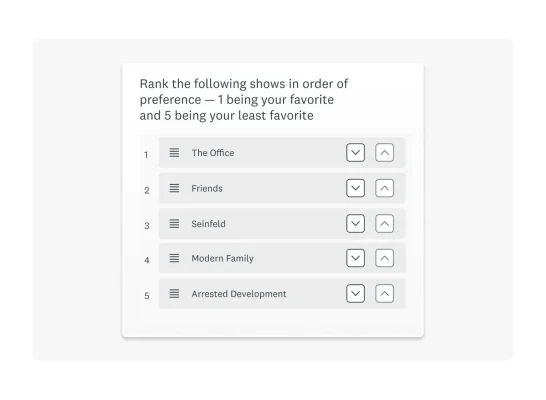
Close-ended questions can even be as simple as giving a star rating. When you rate a restaurant, movie, or book from 1-5 stars, you are actively engaging in a close-ended question format.
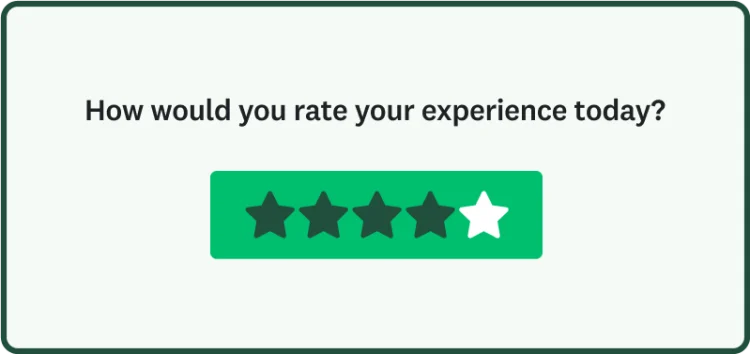
When to use open-ended vs. closed-ended questions
Open-ended questions aren’t necessarily better or more effective than closed-ended ones, and vice versa. Getting the most from these types of questions comes back to understanding the type of survey you want to create, your research goals, and what information you want to get from respondents.
Here’s what you should consider when deciding whether to use open-ended or close-ended questions.
Think about the data and insights you need
The questions you use in a survey will directly influence the data and insights that you produce. One of the best ways to decide how to write your survey questions is to consider whether quantitative or qualitative research would be more useful for you.
If you want to analyze survey data to reveal trends in plot relationships, then close-ended questions may be more effective. On the other hand, open-ended questions might be more useful if you want to understand why your customers think a certain way.
Consider your audience
Thinking from the perspective of a respondent will help shape your survey for the better. SurveyMonkey research demonstrates that keeping your surveys short is vital for boosting response rates. With that in mind, you may want to limit the number of open-ended questions in a survey. As these take longer to fill out, they can frustrate users if you add lots of them.
One way to use open-ended questions without burdening your audience is to make them optional. It could be nice to get extra information in response to certain questions, but it won’t make or break your survey. In that case, just include an option for open-ended questions. Your most enthusiastic respondents will take the time to give you extra information, while speed-finishers will skip over it.
Requiring answers to every single question will slow down your audience. Especially considering that many people may respond to your survey on mobile, having to type a lot can quickly lead to an early survey exit.
Get the why behind the numbers
While close-ended questions are great for rapidly generating data, they can also miss out on a key piece of the puzzle. If you want to understand the why behind your data, add one or two open-ended questions.
Qualitative insights are vital for understanding the logic behind certain trends in your data. While data can sometimes speak for itself, the additional insight that qualitative research from open-ended questions can provide is extremely useful.
3 tips for using open and closed-ended questions effectively
Both open and close-ended questions have their time and place. Together, they can provide comprehensive insight that stretches across quantitative and qualitative research.
Here are three tips for using open and close-ended questions effectively.
#1: Write clear, unbiased questions
Whether open or close-ended, your priority should always be writing clear, unbiased questions. Your questions should be unambiguous, unbiased, and simple to understand. Where possible, use straightforward language and remove any superfluous clauses in your writing.
Good survey questions should also avoid any leading language. You don’t want to introduce bias into your survey with loaded questions.
If you’d like to skip the hassle of writing your questions, you can simply use a SurveyMonkey survey template or pick from our 1000s of pre-written ideas in our Question Bank.
#2: Carefully consider answer scales
The answer scale you select in a close-ended question is extremely important to the final data you produce. Simple responses, like agree/disagree questions, may be far too restrictive to represent a respondent’s opinions.
Instead, you should aim to introduce a degree of flexibility in your close-ended questions. Wherever you can opt for a larger number of selections, do so. A wider range of options will help your respondents to find the exact response that aligns with them.
That said, it’s also important not to take this too far. If someone had to choose how they feel on a scale of 1-1000, you have introduced so much variability into your answers that they may lose all meaning.
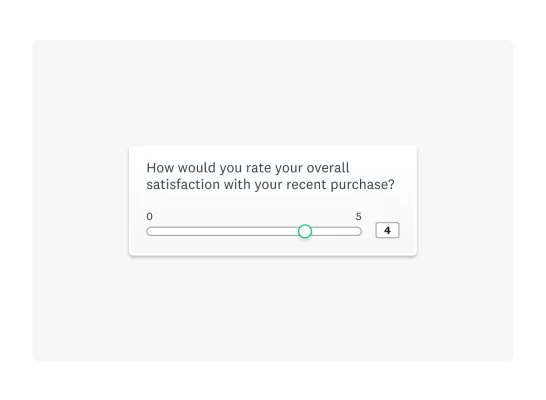
#3: Use text analysis tools for deeper insights
A powerful function of surveys is that you can use analysis tools to rapidly produce useful insight for your business. You’ll instantly see how customers fall on your close-ended response scale as your data pours in.
However, analysis isn’t only limited to close-ended questions and quantifiable research. Your business can automatically sort open-ended questions with rule-based tagging, helping to radically analyze open-ended questions to find out how respondents really feel.
With Natural Language Processing technology, you can conduct sentiment analysis on your open-ended questions, bringing precision to a previously more subjective form of data research.
Build better surveys with SurveyMonkey
Both open-ended and close-ended questions are useful question formats that help produce a wide range of data. Learning to use these questions at certain times will help you generate the necessary information, translating into better research across the board.
With SurveyMonkey, you can use our survey template, resources, and analytical tools to produce reliable, actionable data in a fraction of the time. Get started today.